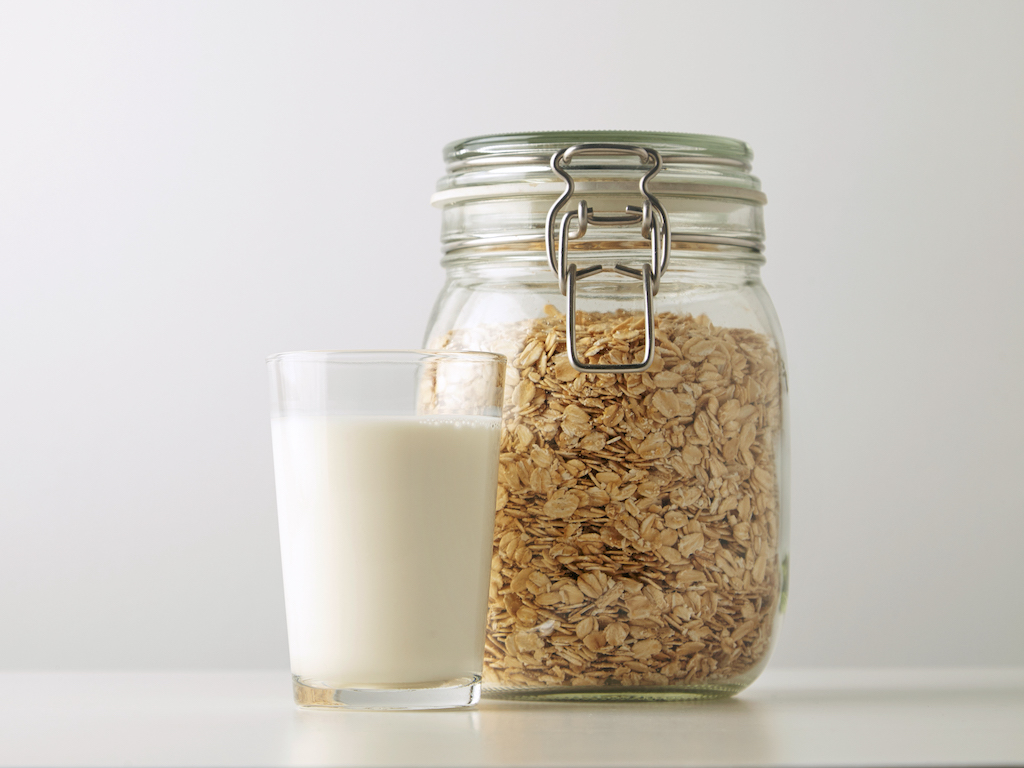Blood and digestive juices in the body have a specific pH range of a specific value. If the range is not maintained then the functions of the body are disturbed. The pH levels usually remain stable in the body but our diet may result in affecting the levels. Eating a balanced diet does not affect the pH levels, though milk is one of the debatable beverages whether it is acidic or alkaline in nature. So, what is the pH of the milk? Milk is slightly acidic in nature with a pH in the range of 6.4 to 6.7, which is close to neutral. Milk contains lactic acid which is a weak base and has the ability to donate a proton, therefore milk is acidic in nature. On pouring milk on a litmus paper, the paper turns blue to red. Though there are several other factors that can affect the pH of the milk making it acidic or neutral in different conditions. The pH of the milk still remains between 6.4 and 6.7, hence it is slightly acidic in nature. Now that we know that the pH of the milk lies in the slightly acidic range, the reason for the same is as below:
Why is Milk Acidic?
According to researchers, there are two types of acidity in milk: apparent acidity and real acidity. The fresh milk from the cow’s udder gives an amphoteric reaction, wherein the acidic reaction of the milk is due to its apparent acidity. The presence of carbon dioxide, acid phosphates, and casein in fresh milk results in the acidic nature of the milk. The real acidity of the milk is due to the presence of lactic acid. Also, the acidity of milk increases over a period of time, the Lactobacillus bacteria in the milk use lactose sugar as a source of energy and convert it into lactic acid in the presence of oxygen. Over time, more lactic acid is produced which increases the acidity of the milk and hence the milk turns sour. Before we learn more about the acidity of the milk, first let’s see what pH describes.
What is PH?
In chemistry, pH or also known as the power of hydrogen is the measure of hydrogen ion concentration which describes the acidity or basicity of an aqueous solution. Mathematically, the negative logarithm of hydrogen concentration of the aqueous solution. Acidic solutions which have higher hydrogen ion concentrations have lower pH whereas the basic solutions with lower hydrogen ion concentrations have higher pH values. The pH scale measures how acidic or basic the solution is. In general, the pH scale ranges from 0 to 14, wherein ● The pH of 0 to < 7 means the aqueous solution is acidic in nature, ● A pH equal to 7 implies a neutral solution, ● And then the pH between 7 and 14 means the solution is basic in nature.
With the increasing pH, the basic nature of the aqueous solution increases and the acidic nature decreases. We learned that milk is acidic in nature, now the question is whether milk can be alkaline or not, if yes then what kind of milk is alkaline in nature.
Which Milk is Alkaline?
Though we studied that milk is slightly acidic in nature with its pH close to but less than neutral. But there are dairy products and several types of milk which are capable of forming alkali in the body, for which the pH of the milk does not matter. For instance, dairy products like yogurt and cottage cheese are alkaline when they enter the digestive tract, thus they effectively reduce stomach acid levels. Such types of foods also produce alkaline ash after digestion which helps to keep the body alkaline. Our body needs both kinds of food, acid-forming, and alkaline-forming in the right amount. Excess or deficiency of anyone disturbs the functioning of the human body. But the foods with pH below 7 do not imply that these are acid-forming and likewise one with a pH greater than 7 does not depict that those are alkaline-forming in the body.
Types of Milk and their pH
As discussed earlier, the pH of milk lies below neutral i.e. between a range of 6.4 to 6.7, making it slightly acidic in nature. But the pH of milk varies as the source of milk changes. Milk can be obtained from mammalian animals or some plants as well. Below is the pH of milk from certain sources: The pH of non-dairy milk like oats, almonds, cashew, and coconut milk lies around 6. • Cow’s milk: The pH of cow’s milk, whether raw, pasteurized, canned, or dry is less than neutral and is an acid-forming food. Raw milk is an exception which is said to be alkaline-forming food. Although the nature of the food whether it is acid or alkaline-forming does not depend on its pH. Though milk is thought to be a remedy for acid reflux, it may rather worsen the condition as it will produce acid in the stomach. The healing effect is due to the fats present in the milk which coats the esophagus and stomach giving a cooling effect but the fact is milk does not have antacid properties. Similarly, goat’s, sheep’s, and buffalo’s milk are also acid-forming and the pH depends on what form the milk is in. Fresh milk has the highest pH as compared to processed or pasteurized milk. • Soy milk: It is plant-based milk made from soya beans, which are legumes.
Generally, legumes are acid-forming foods, but soybeans are neutral or alkaline and thus are considered to be alkaline-forming. • Almond milk: Almond milk is alkaline-forming milk in the body which comes with its own health benefits.
• Coconut milk: Coconut milk is obtained from mature brown coconuts and is alkaline-forming in the body. The intake of coconut milk improves the levels of cholesterol and triglycerides in the body.
• Oat milk: Oat milk is derived from oats and is acid-forming.
Oat milk helps in lowering both total and LDL cholesterol and protecting LDL cholesterol from oxidation.
Pasteurized Milk vs. Raw Milk
Pasteurized milk is that milk has been heated to a particular temperature and then cooled to kill the harmful pathogens which may be present in the raw milk.
Raw milk is one that is not pasteurized and has harmful bacterias and microorganisms present in it. Raw milk can be obtained from any animal but it is dangerous if consumed and can pose serious threats to health. Most of the nutritional values of milk are retained after pasteurization, though some of the enzymes in milk become inactive (although these are not important for human health) after heating, there is no risk that comes with drinking raw milk. Raw milk contains some amount of Vitamin C which does not remain on pasteurization. There are several myths related to the consumption of raw milk like it is better for people who are lactose intolerant. But the fact remains that the pathogens present in the raw milk pose serious threats, especially to older people due to their weak immune systems. Thus pasteurized milk has the same nutritional values and benefits the same way as raw milk except for the risk that comes with raw milk is that pasteurized milk is not harmful or dangerous to human health.
Factors Affecting the pH of the Milk
The pH of the milk describes its nature whether it is acidic or alkaline in nature. The factors that govern the pH of milk are as follows: ● Effect on pH with time: We know that standing milk starts turning sour over a period of time, this implies the pH of milk decreases when kept standing for long. This happens as the lactose sugar is converted into lactic acid by Lactobacillus bacteria, when kept standing for long hours, more amount of lactose is converted into lactic acid, and hence the acidity of milk increases over a period of time. ● Effect of pasteurization and additives: The pH of milk is different when the milk is freshly produced from the animal, or when there are some additives in it and is processed or even on pasteurization. Fresh milk always has the highest pH, while after processing or pasteurization, due to the presence of additives and removal of harmful pathogens, bacteria respectively, the pH of the milk decreases, and the milk becomes more acidic as compared to the fresh milk. ● Source of milk: The pH of the milk also differs from the source of the milk. As discussed above the pH of the milk is different when obtained from different sources. Milk obtained from humans has the highest pH while milk from other mammals has a slightly acidic pH and plant-derived milk has a pH value of around 6. ● Effect of temperature: With the increase in temperature the pH of the milk decreases as the milk decay due to the bacteria present in it increasing. As the Lactobacillus bacteria convert lactose to lactic acid for energy, the milk decays. As the milk decay increases, more lactic acid is formed, and therefore there is a decrease in pH, and acidity increases. Therefore, with an increase in temperature, the milk decay increases and the pH decreases, and hence the acidity of the milk increases. Below is the video explaining the pasteurization of milk. Have a look.
Conclusion
So, we have understood that the milk is slightly acidic in nature with a pH close but less than neutral which is why it is often confused to be neutral in nature. Fresh milk has the highest pH, on processing and pasteurization, or on keeping milk standing for a long time, the pH of the milk decreases, and the milk becomes slightly acidic. Some of the milk products like yogurt, buttermilk and almond milk, etc. are alkaline-forming foods and help in neutralizing the acid effect in the stomach. The pH of milk varies as the source of milk differs. The milk obtained from mammals is mostly acid-forming while the milk derived from plant sources is alkaline-forming in the body. Also, the main difference between pasteurized and raw milk is that the latter is harmful and poses threats to human health as there are pathogens like bacteria and microorganisms present in it. And hence raw milk is not consumed directly without undergoing the process of pasteurization which is heating the milk to a certain temperature and then letting it cool down. There are several factors that affect the pH of the milk like pasteurization or processing the milk by adding preservatives or other additives. In conclusion, we say that the milk is slightly acidic in nature with a pH in the range of 6.4 to 6.7 which is close to neutral. Check out a few more interesting similar topics. I have also written about the pH of tomato, pH of coffee, pH of honey.
/glass-of-milk-pouring-87984584-593d45d33df78c537b632490.jpg)


/GettyImages-150639392-5863e0903df78ce2c3bd2860.jpg)


